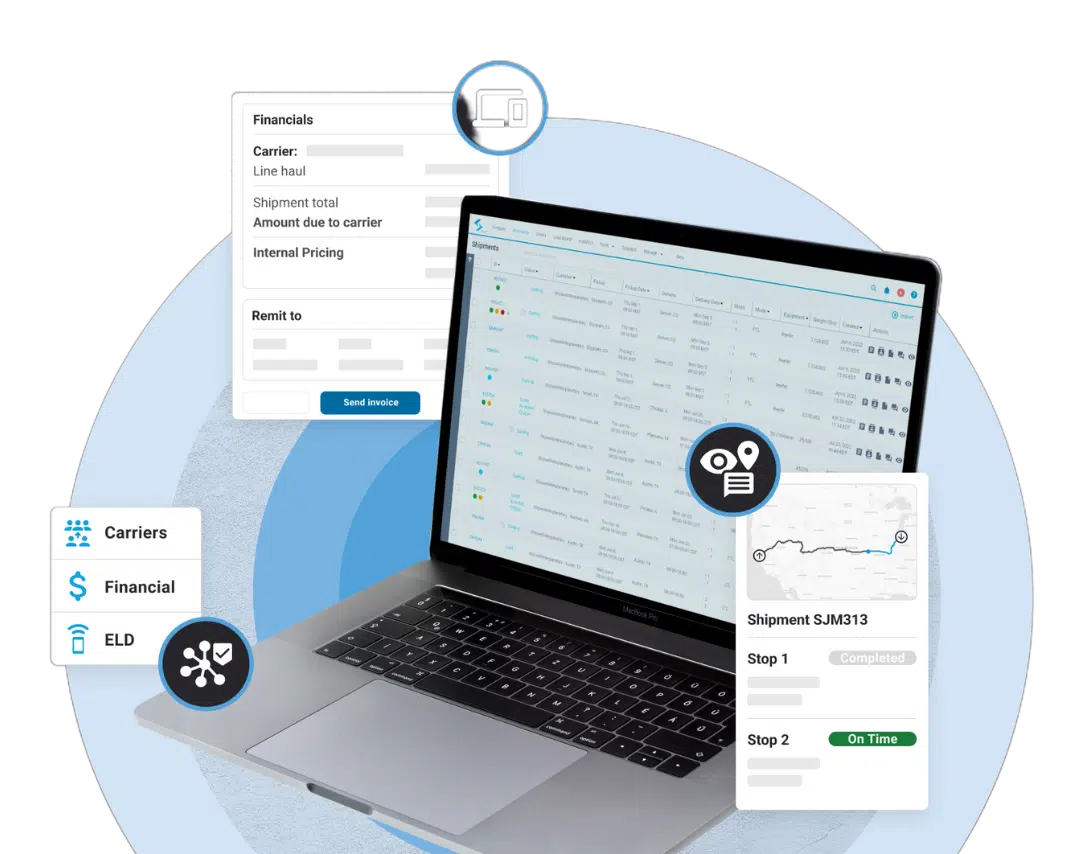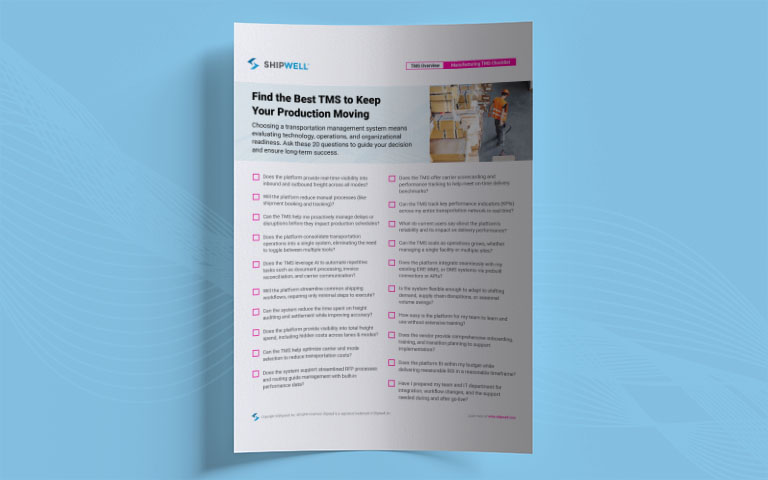Top TMS Integrations for Seamless Supply Chains

As anyone in the industry can tell you, the efficiency of your supply chain can make or break your business. A seamless supply chain not only ensures products reach customers on time but also optimizes costs and resources. To achieve this level of efficiency, companies are increasingly turning to technology, and one critical tool in this arsenal is Transportation Management Systems (TMS). However, the true potential of a TMS can only be realized when it is seamlessly integrated with other enterprise software.
These integrations involve connecting your transportation management system with other essential enterprise software, such as Enterprise Resource Planning (ERP) and Customer Relationship Management (CRM) systems. And it’s only through them that it’s possible to create a unified ecosystem where data can flow seamlessly between different systems, enabling better decision-making and streamlined processes.
So what kind of integrations should you ensure your TMS offers? Keep reading to find out.

Are you a NetSuite user?
SuiteWorld is coming up fast! So come on by to see us in Las Vegas to discover how Shipwell’s fully integrated TMS is transforming the way NetSuite users view logistics and supply chain management.
Integrations Needed To Unleash The Full Potential Of Your TMS
1.
ERP Integrations
Integrating TMS with your ERP system allows for a holistic view of your supply chain operations. Whether you use Oracle NetSuite, SAP, Microsoft Dynamics 365, or another ERP system, when your TMS and ERP are connected, you can automate order processing, generate accurate invoices, and maintain up-to-date inventory records. This leads to fewer errors, reduced administrative work, and improved order accuracy.
2.
CRM Integrations
Integrating a CRM system like Microsoft Dynamics 365 with your TMS allows your sales and customer service teams to access real-time shipment information and provide accurate delivery estimates to customers. This enhanced visibility into transportation operations can lead to better customer satisfaction and loyalty.
3.
EDI Integrations
Integration with EDI systems allows for the seamless exchange of electronic documents between your TMS and trading partners. This enables automated procurement and order processing, electronic invoicing, and real-time communication, reducing manual data entry and improving data accuracy.
4.
ELD Integrations
Integrating your TMS with ELD systems helps you ensure visibility throughout the shipment lifecycle, as well as compliance with regulations governing driver hours of service. This integration provides real-time visibility into driver status, driving hours, real-time location, and rest breaks. WIth direct integration to your TMS, you can also gain greater visibility into shipment ETAs by factoring in road conditions like weather and traffic to keep customers up to date.
5.
Freight Network Integrations
Connecting your TMS to freight networks and marketplaces like DAT or TruckStop enables you to access a broader pool of carriers and capacity options. This integration can not only expand your transportation options but information from this integration can also be used by your TMS to identify pricing trends and set benchmarks to guide your strategy, allowing you to consistently select the most cost-effective and efficient carriers for your shipments.
6.
Carrier Rating and Compliance Integrations
Integrating your TMS with carrier rating and compliance systems like SaferWatch and RMIS helps you evaluate carrier performance and ensure adherence to regulatory requirements. By providing instant access to customized carrier compliance data, including authority, insurance, reliability, safety records, and compliance with industry standards, this integration makes it easy to manage the safety and compliance of all your preferred carriers.
7.
Financial Management Integrations
Integration with financial management systems like TriumphPay, NetSuite, and Quickbooks streamlines financial processes related to transportation. It allows information like purchase orders to flow automatically directly from your TMS into your financial management application to enable capabilities like automated invoice generation and billing, expense tracking, and financial reporting to ensure accurate financial records and cost allocation.
The Benefits of a Fully Integrated Supply Chain
From cost savings and increased efficiency to improved visibility and strategic planning, a TMS is a powerful tool for optimizing transportation operations, but its true potential is realized when it is seamlessly integrated with other enterprise software systems. TMS integration breaks down silos, enhances visibility, streamlines processes, and fosters collaboration, ultimately leading to a truly connected supply chain. In today's competitive business landscape, where speed and efficiency are paramount, TMS integration is the key to staying ahead of the curve and ensuring your supply chain runs like a well-oiled machine.
For more information on how Shipwell is working to create a truly connected shipping ecosystem and what that could mean for your business, schedule a demo today, or stop by to see us at SuiteWorld in Las Vegas on October 16-19th!


.svg)








